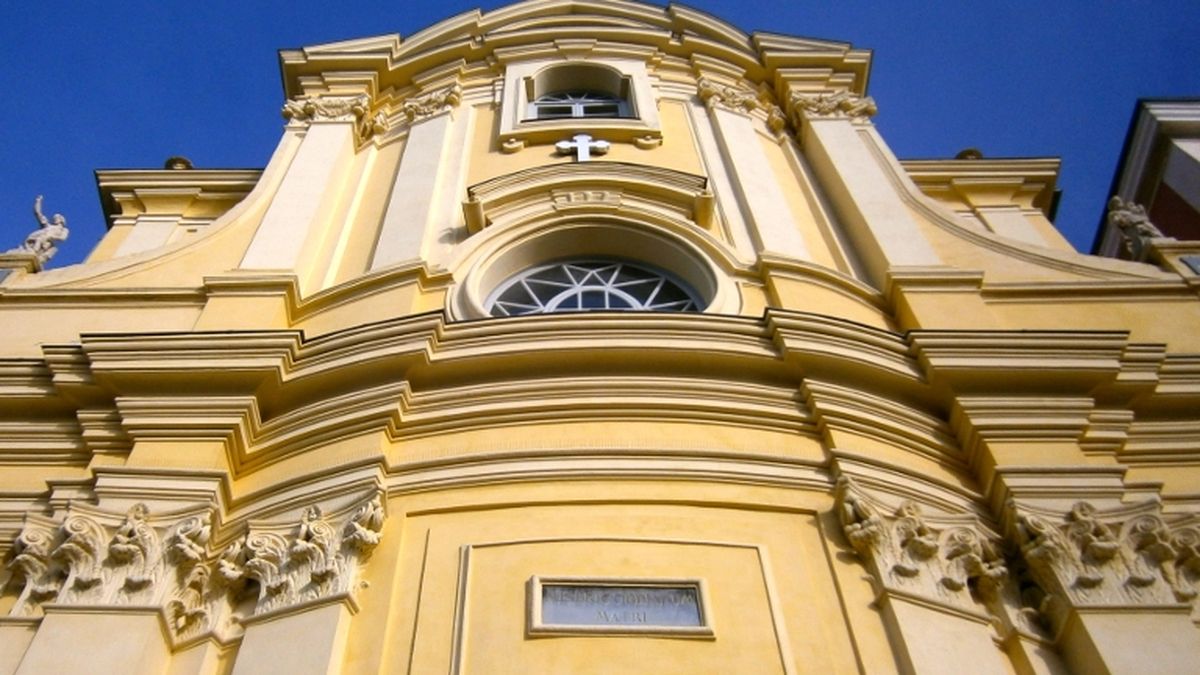 The façade | ©Gus.mlb / CC-BY-SA
The façade | ©Gus.mlb / CC-BY-SAThe chapel
In the past, the church was called "chapel of St-Gaetano", named after Gaetano di Thiene, an Italian monk who founded the Theatines order. Those Theatines raised the chapel in 1736, based on plans by Italian architect Guarini.
Transformed into a warehouse during the French Revolution then into a theatre, it became chapelle de la Miséricorde (Mercy) in 1828, when the brotherhood of Black Penitents moved in.
Black Penitents? Yes, in Nice, we have 4 kind of brotherhoods:
• The Blue Penitents, founded in 1431, who owned their own chapel de l’Assomption.
• The White Penitents founded in Nice in 1306
• The Red Penitents founded in Nice in 1585
• The Black Penitents founded in 1522. It was composed of the richest people from Nice.
The two retables
Come on, let’s visit the church! In the sacristy, let me introduce the retables: two Mercy Virgin Mary, painted by Louis Brea (1485) and Jean Miralhet (1430).
Jean Miralhet
Art historian Léon Palustre de Montifaut (19th century) said about Miralhet’s one: "This retable remind me the Florentine painting school and mellow paintings by Fra Angelico."
The funniest detail in the painting is this little crowd, popes, cardinals and all manner of lords, taking shelter under Virgin Mary's coat’s tail! On the right, saint Sebastian and saint Gregory. On the left, saint Come and saint Damien.
Above all these saints are saints Estève, Laurent, Valentin, Pétronill and a Jesus on a blue starry sky. On the lower part of the retable, we have HOC PINXIT JOHANES MIRAIHETI (PETTINATI LUIGI RESTAURAVIT 1850), which means "Painted by Jean Miralhet. Restored in 1850".
Louis Brea
Now, Brea’s retable. We have the Virgin Mary surrounds by 2 angels. She holds Jesus on her left arm. Look at that! Like in Miralhet’s retable, Mary moves her coat’s tail apart; lots of little people hide in there! A funny detail: we can see at the bottom the old medieval castle of Nice and St-Antoine's bridge!
The middle part of the retable was painted by Brea, the two other parts were added in the 19th century. Oh, by the way, this masterpiece was displayed for centuries, outside, in a niche near Sainte-Réparate cathedral!
When they decided to do something, it was too late, the painting was damaged. A man called David restored it in 1874. This David added few details of his own invention, who weren’t here on the primitive work!
